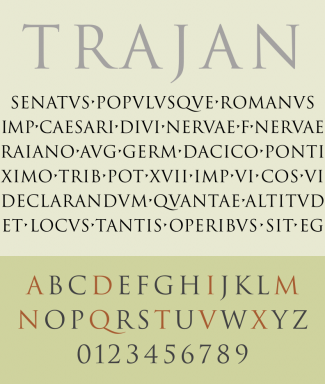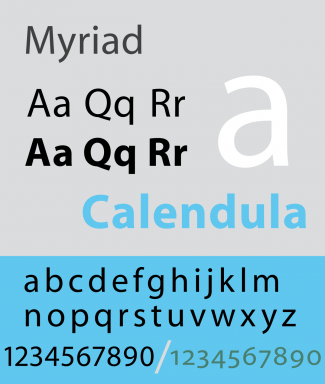
Carol Twombly is a well-known American designer who specializes in type design. She worked as a type designer at Adobe Systems from 1988 to 1999, designing or contributing to the design of various types such as Trajan, Myriad, and Adobe Caslon. Twombly left Adobe and type design in early 1999 to pursue her other creative interests, which included textiles and jewellery.
She attended and graduated from the Rhode Island School of Design, where she studied sculpture before switching to graphic design. She credits her instructors, Charles Bigelow and Kris Holmes, whose studio she worked in, with inspiring her and sparking her interest in typography. Gerard Unger, a visiting instructor at RISD during Twombly’s time as a student, also inspired her work. Twombly was one of only five people to receive Master of Science degrees in computer science and typographic design from Stanford University’s short-lived digital typography department.


In 1988, Twombly joined Adobe. Trajan was one of her first projects at Adobe. As a designer, Twombly spent a lot of time researching old scripts to get ideas for digital typefaces. In 1989, she successfully transformed Roman inscriptions into a modern computer design resulting in the typeface Trajan. She then used her skills as a calligrapher and her passion for paleography to transform Carolingian versals, or ornamental capital letters, into Charlemagne, a digital typeface. The exact source was a page from the British Library’s Anglo-Saxon Benedictional of Saint Aethelwold. Similarly, Twombly built Lithos on historical precedents, albeit more broadly on ancient Greek inscriptions than on specific models. “Modern Ancients” was a marketing term used by Adobe to describe Trajan, Charlemagne, and Lithos. She looked attentively at the well-known eighteenth-century typeface designed by William Caslon to produce a modern digital equivalent when designing Adobe Caslon. The sans serif Myriad, her first entirely original typeface design, was created in collaboration with Robert Slimbach.

Fonts such as Ponderosa, Pepperwood, Zebrawood, and Rosewood were part of an Adobe attempt to resurrect American showcase typefaces in wood type from the 1880s under Twombly’s art direction. Following this series, she went on to design two new types for Adobe. Twombly designed Nueva, an original design, and Chaparral, a calligraphic shape that references nineteenth-century slab serif forms and sixteenth-century roman book hand. She worked with calligrapher Linnea Lundquist to create Chaparral.
In 1999, Twombly left Adobe. She highlighted several reasons for the decision in 2014, including a lack of interest in producing fonts for onscreen display and the market failure of Adobe’s multiple master font technologies. She is now a self-employed artist who specializes in drawing, painting on fabrics, beading shekeres, and basket-making.
Sources:
https://en.wikipedia.org/wiki/Carol_Twombly
Image Sources:
http://luc.devroye.org/fonts-26216.html
https://commons.wikimedia.org/wiki/File:Myriadsp.svg#/media/File:Myriadsp.svg

Leave a Reply